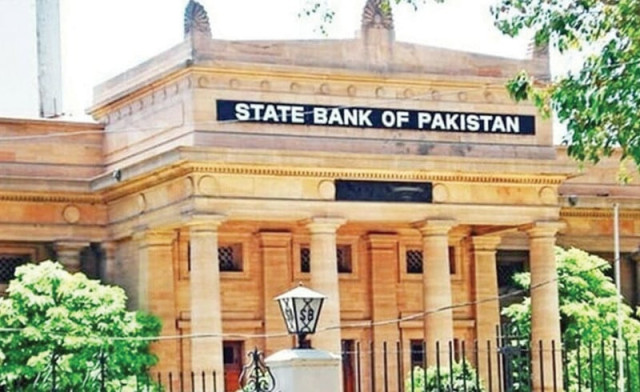Central bank expected to make modest rate cut
Experts see reduction of 100-200 bps reflecting inflation, IMF recommendation

Pakistan’s central bank is scheduled to meet on Monday (June 10) to review the economic scenario and determine the key interest rate for the next six weeks.
Financial markets and pundits anticipate the bank will reduce the rate in the range of 100-200 basis points (bps) in the wake of a much deeper deceleration in inflation than market expectations to over two-and-a-half-year low at 11.8% in May 2024.
The latest monthly inflation has turned the real interest rate positive at 10.2%, which is the difference between the prevailing interest rate of 22% and the inflation of 11.8%.
Talking to The Express Tribune, Ismail Iqbal Securities Head of Research Saad Hanif noted that the central bank is running the historically high real interest rate against an average of 2-3% in the past, providing ample room to cut the policy rate up to 400 bps.
However, Hanif suggested that the bank would make a token cut of only 100 bps to 21% on Monday, ahead of the federal budget presentation. Later, the government is expected to secure a new International Monetary Fund (IMF) loan programme.
Additionally, the government is projected to impose new taxes and increase tax rates in the budget, which will keep inflation elevated in initial months of the next fiscal year.
Meanwhile, the IMF has recommended the central bank to maintain a tight monetary policy.
The historically high policy rate of 22% has helped the government manage its low foreign exchange reserves of $9.11 billion, mitigating the risk of default and keeping the rupee stronger against the US dollar. Hanif said a more substantial cut in the policy rate would boost demand for the greenback and cause rupee devaluation, though it would support economic activities and job creation.
He argued that the bank had enough room to cut the rate. Despite the inflationary impact of the upcoming budget, the inflation will not surge beyond 7-18% in the coming months and will not touch the ceiling of 20% in the next fiscal year.
The bank could potentially reduce the interest rate by more than 100 bps, if deemed necessary, while still managing demand for the greenback through the current policy. This suggests that imports will not surpass the sum of export earnings and workers’ remittances.
Moreover, the government will take measures to ramp up export earnings and promote import substitution as well as undertake structural reforms to fix the economy. In its previous monetary policy, the State Bank of Pakistan (SBP) highlighted that the global central banks like the US Federal Reserve (Fed) had maintained interest rates and delayed the first cut for quite a long time.
However, two global banks including the Canadian central bank and the European Central Bank (ECB) have cut rates by 25 basis points this week, bringing down the rates from historical ceilings.
On the flip side, the short-term inflation, measured through the SPI, has been on the rise for the past two weeks, mainly due to a reversal in food prices ahead of Eidul Azha.
The uptick in inflation provides a strong ground to the central bank to avoid cutting the rate, a scenario that a minority section of analysts and investors have not ruled out.
Alternatively, the bank might opt to make a token cut in the rate and continue to maintain a tight monetary policy in line with the IMF’s recommendation.
Published in The Express Tribune, June 9th, 2024.
Like Business on Facebook, follow @TribuneBiz on Twitter to stay informed and join in the conversation.



















COMMENTS
Comments are moderated and generally will be posted if they are on-topic and not abusive.
For more information, please see our Comments FAQ